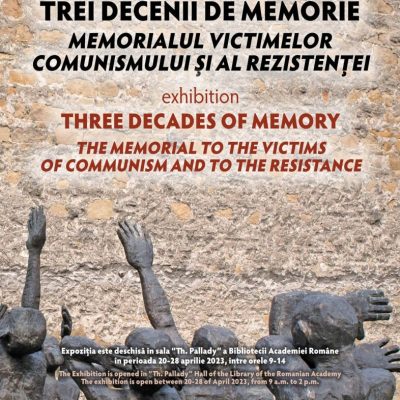The Memorial of Sighet
Cultural Route: Tourism of
memory (5)
On the border between Hungary and
Ukraine, an institution of European
memory gives testimony of an initiative
of deletion by the Communist regime of
links with the past. A place of the
spoken word and history, it is directed
as much at young Romanians as tourists
who want to understand what mortal
tragedy took place within the walls of a
prison.
MICHEL THOMAS-PENETTE
Ana Blandiana, the Romanian poetess
at the heart of the memorial dedicated
to the victims of Communism and of
the Resistance of Sighet, proposed
during the opening of the Campaign of
the Council of Europe in 1999 titled
Europe, a common heritage, to take
equally into account the “Heritage of
suffering”. As she said from the
beginning: “obsessions of suffering
and collective responsibility cannot be
erased by neglect or indifference, but
by analysis, by understanding and even
compassion.”
The town of Sighet is situated in the
Maramures, one of the most beautiful
regions of Romania, where the wooden
architecture of the country houses
interact with a collection of churches,
which form part of the UNESCO list of
world heritage. Slender silhouettes
where the wood is finished with grey,
single or double roofs, covered in
shingles, these little wooden tiles,
whose preparation requires the
perpetuation of an ancestral craft.
It is in this idyllic enough setting, on
the border with the former USSR, that
Sighet prison (former prison of the
Austro-Hungarian Empire) was
installed, and became the first political
prison of Communist Romania. A
country that saw itself deprived of all
its elite.
THE PRISON OF MINISTERS
It began with the leaders of democratic
parties, then the ministers of all the
governments since the First World War,
the civil service and then the
representatives of all the Churches:
Orthodox, Catholic, and the Greek-
Catholic. Artists, scholars, and
academics who didn’t want to adopt
“dialectical materialism” were no
exception either. But perhaps above all
others, the countrymen that were
leaders in their village, and of whom
some rose up against the Red Army,
also perished there. Not only is this the
memory of a people whose destruction
was sought after, but also, those who
carried this memory, and were its
anchor in the long term.
Ana Blandiana and her husband
Romulus Rusan’s project has been to
tell the stories, to form a place where
the word of suffering was saved and
guarded, since the creation of the Civil
Alliance after 1989. Furthermore, they
wanted a summer school to take place
there every year for young Romanians
and Moldovans, as well as a meeting
between historians and witnesses. In
this manner, the prison, now a
memorial and museum, opened spaces
in its former cells dedicated to the
different categories of prisoners, and
also to the countries of the former
Communist Block which had a similar
experience.
This project fought not only to find
financing and technical aids, but also
social and political recognition. “I
recall”, tells Anna Blandiana, “how
when I announced that we had started
the memorial project under the aegis of
the Council of Europe, the government
newspaper (in 1994) put as their frontpage
headline: “They sell the suffering
of the Romanians to Council of
Europe”, just like in 2000 in Belgrade,
the newspapers in favour of Milosevic
wrote “The Opposition sell Serbia to
NATO”. Which proves that it is a
question of not only of fighting for
legal punishment of the persecutors, but
also – and even more so – for the
building of the future.”
Nowadays, after the Romanian Head of
State recognised the crimes of
Communism in 2006, describing the
treatment of a population as “a bunch of
guinea pigs submitted to an absurd
social engineering”, the memorial of
Sighet has undoubtedly taken another
role: that of a place that can physically
show to younger generations what they
learn theoretically in their schoolbooks.
But for all those that go to Romania,
this place is a must if they want to
understand scientifically, and at the
same in a sensitive way, how that at
each attempt to suppress memory,
citizens stand up against it to pass down
the word that risks being erased.
*Memorial’s website
www.memorialsighet.ro
http://www.culture-routes.lu/php/fo_index.php?lng=en&dest=bd_do_det&id=00006030


